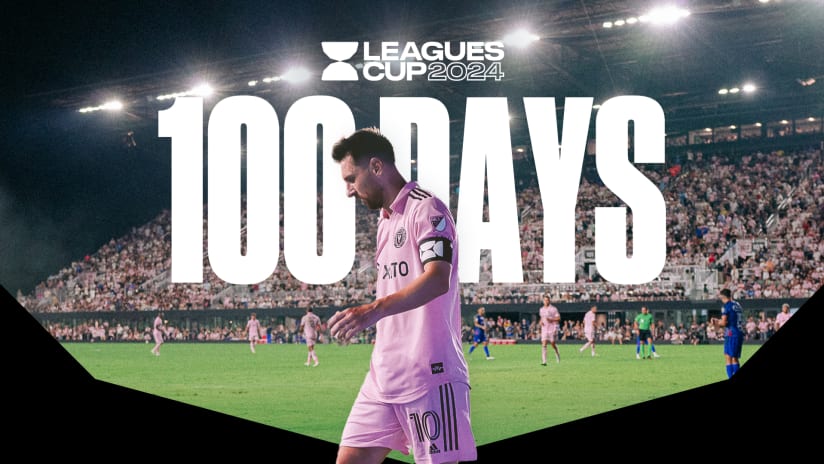The more a player sees of the ball, the more important they usually are. This is common sense.
A coach obviously prefers having their stronger players handle the ball more often than their weaker players. But this is not a cut-and-dry rule. Clint Dempsey and Michael Bradley are two of the best players in MLS, but due to differences in positioning they see the ball at significantly different rates.
Dempsey, in matches he has started, has attempted 9.5 percent of Seattle's overall passes. In contrast, Bradley has attempted a league-leading 16.3 percent of Toronto's overall attempted passes. This percentile measurement is called "Usage Rate," and Bradley has been a leader in this category at every stop along his career path.
However, usage rate isn't perfectly illustrative. It treats every pass between every player exactly the same. One metric that is gaining traction in the soccer analytics community is "Centrality" and its many derivatives. The flavor we will use is "Eigenvector Centrality," which is a "measure of the influence of a node in a network." Using the passing networks commonly featured in this series, we can use centrality to calculate just how influential a player's passes are to their team's overall ball circulation on a game-by-game basis.
For example, below is the Seattle Sounders network from their 2-1 loss to Real Salt Lake this past weekend. Each player's position is representative of their average touch location through the match. More importantly, the thickness of the lines between players are representative of the volume of passes exchanged between them.
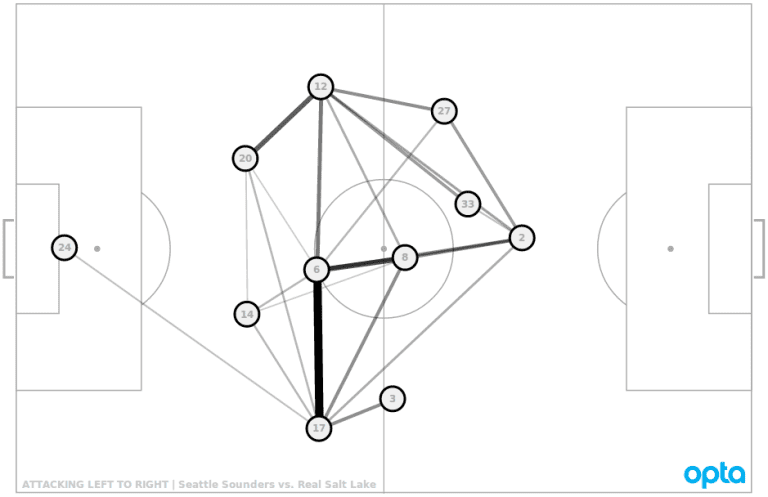
In this match, Osvaldo Alonso had the highest influence score. Stefan Frei, like most goalkeepers, finished near the bottom.
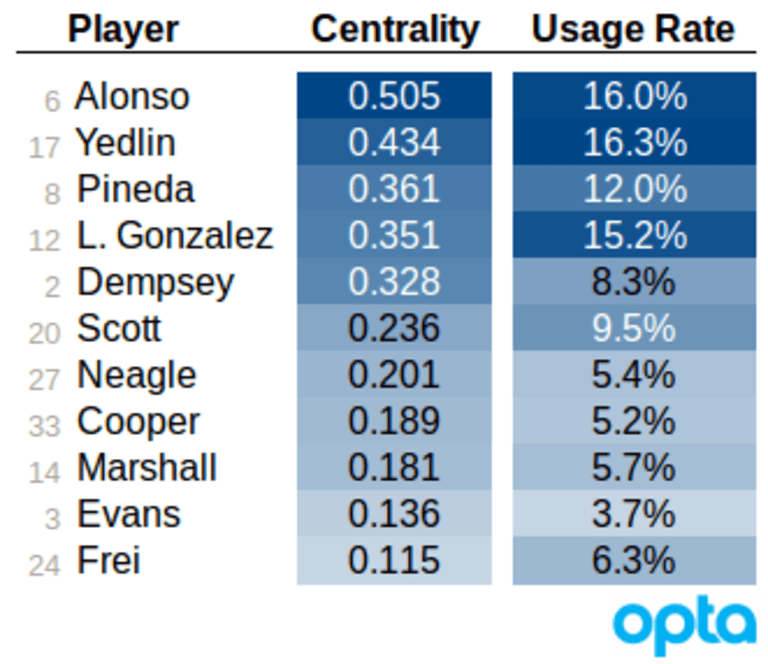
As you can see in this small sample, usage rate and centrality are highly correlated. But that makes sense; players that see the ball more tend to be more influential. In fact, if we look across all of 2014 MLS, we find this correlation to be quite strong.
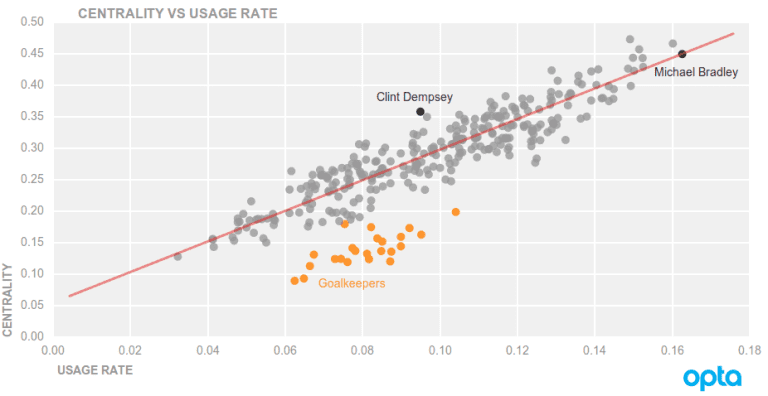
In plotting these two metrics against each other, and estimating the strength of the relationship, we have gained the ability to answer a really interesting question. Which players' usage rates are disproportionately influential to their team's overall ball circulation? Dempsey doesn't have a higher usage or a higher influence over his team's passing network than Bradley, but he delivers far more influence per unit of usage. In fact, his influence is more disproportionately positive than any other player in the league so far in 2014.
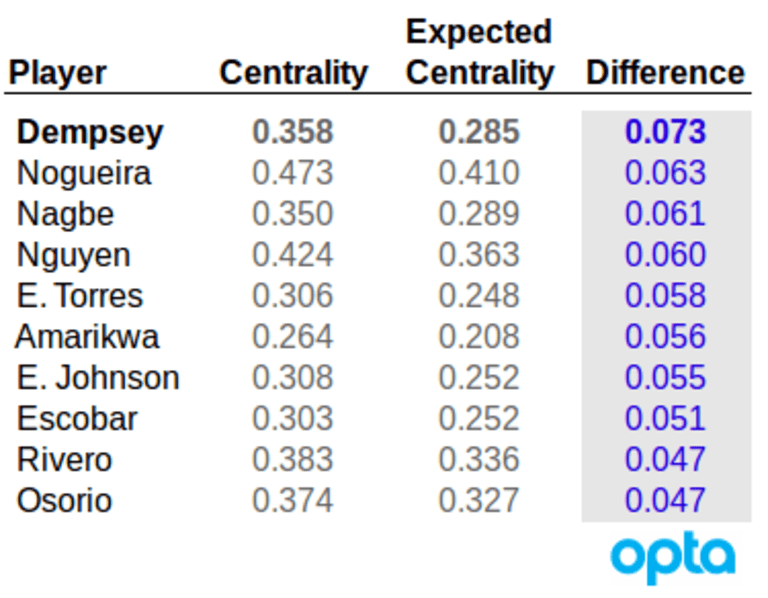
Dempsey, for both club and country, has often received criticism for "floating" in and out of games. This finding suggests that Clint can remain highly influential in his team's system no matter his level of involvement.










